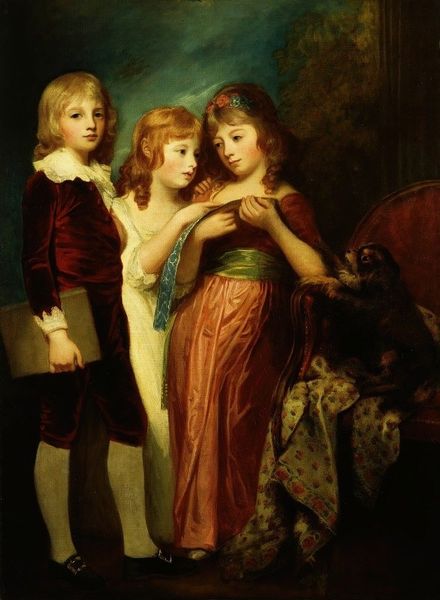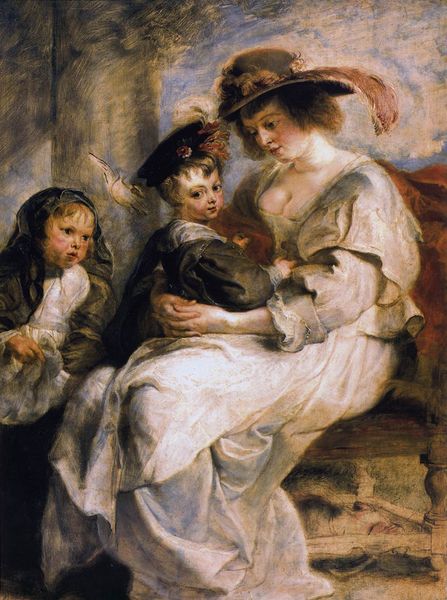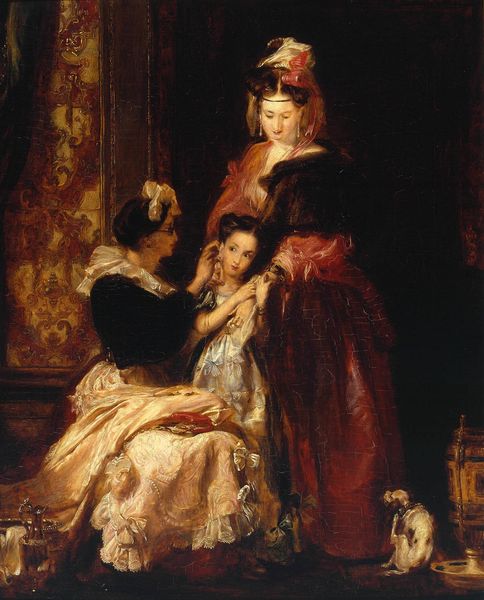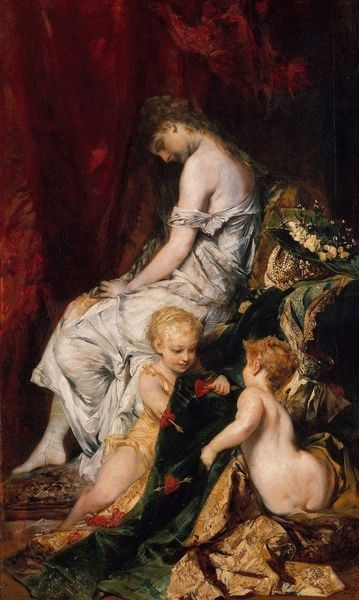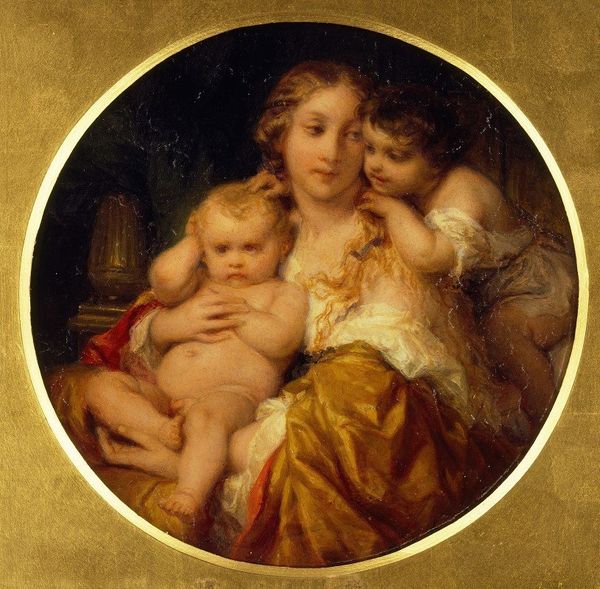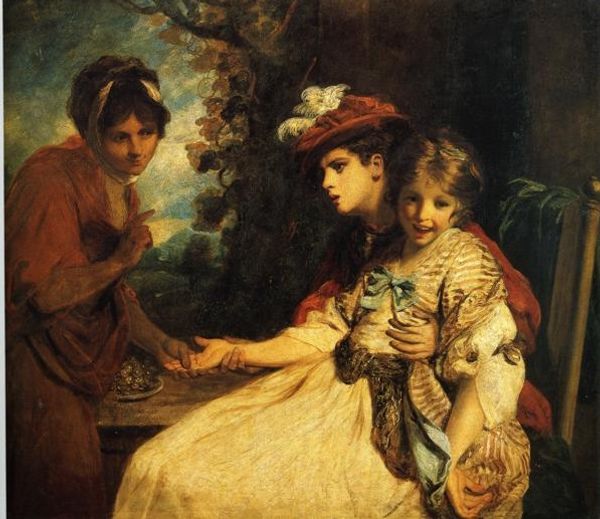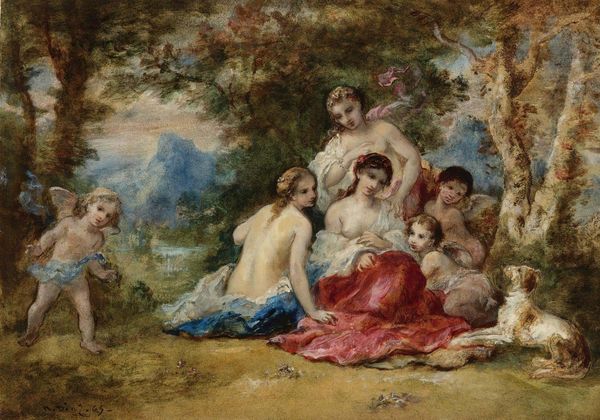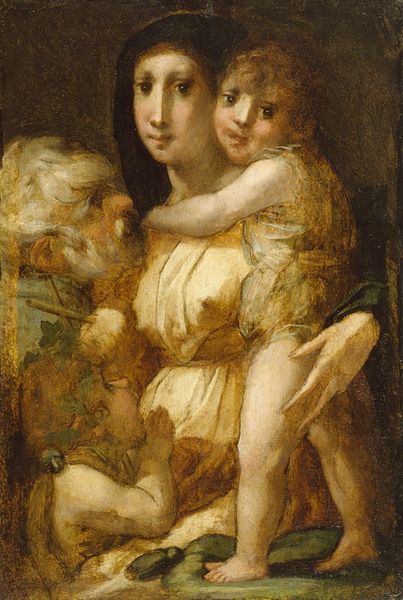
painting, oil-paint, impasto
#
portrait
#
impressionistic
#
painting
#
impressionism
#
oil-paint
#
oil painting
#
impasto
#
group-portraits
#
romanticism
#
genre-painting
Dimensions: 98.8 x 161.2 cm
Copyright: Public domain
Editor: This is “Empress Eugenie And Her Attendants” by Adolphe Joseph Thomas Monticelli, an oil painting done with a very thick impasto. It's... unusual. I find the brushstrokes quite rough, especially for a portrait of nobility. What are your thoughts when you look at it? Curator: Well, let’s consider the material conditions of its creation. Monticelli's impasto technique wasn't just a stylistic choice; it was a way of working rapidly, of building up the painting surface quickly. The sheer amount of paint used signals something about its intended audience. Editor: Intended audience? Curator: Yes. It moves beyond merely representing the Empress. Think about it. The labor involved in producing such a textured surface—the cost of the materials, the time, the sheer physicality—suggests it was aimed at collectors interested in the spectacle of artistic production. Someone less focused on perfect resemblance and more intrigued by process. Does that make sense? Editor: So, the value lies not just in the subject matter, but in the evidence of its making? Curator: Exactly. It challenges traditional portraiture's emphasis on idealized representation. Instead, the emphasis is shifted onto the materiality of the paint and the artist's labor. This piece is not about "likeness;" it is about material, labor and spectacle. The 'reality' of it. Editor: I see what you mean! I was stuck on the faces looking a little smudged. Now I’m thinking more about the texture of the dresses, and the implications of those thick layers of paint. It completely changes my perspective. Curator: Precisely. By focusing on the materials and processes, we gain a richer understanding. Not just of Monticelli's technique, but the shifting social context in which art was being produced and consumed.
Comments
No comments
Be the first to comment and join the conversation on the ultimate creative platform.
